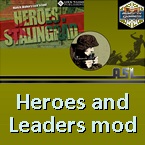asl3d
Posts: 6531
Joined: 2/6/2017
Status: offline

|
Most of the Panther D's flaws were eventually rectified (although the later models' engines remained capricious), and in the Ausf G. The panzer force had one of the best tanks of World War II. Its combination of firepower, mobility, and armor made it an extremely formidable opponent. The U.S. Army judged that it generally took five Shermans to destroy a Panther. Although over 2,953 were built, and the 1944 Pz. Regiment establishment called for one battalion each of Panthers and PzKpfw IV (with the Panthers generally equipping the 1st battalion), there were—fortunately for the Allies—never enough to go around. Like the PzKpfw IV, the Panther—in other than favored Pz. divisions—was used in four-vehicle platoons rather than the five called for in the official establishment.
The last production model, the Panther Ausf.G (the denomination Pz.Kpfw V had by then been abandoned at Hitler’s request) made its appearance in 1944. This model contained significant modifications. Indeed the sides of the superstructure were modified to simplify manufacture, and the rear storage boxes now formed an integral part of the hull. The sides of the hull were characterized by the absence of the lower projections at the back ends of the superstructure, present on the D and A models. The armor plating on the sides was increased to 50 mm thickness.
The driver's slit present on Ausf.D and Ausf.A was removed and the driver’s fixed episcopes were replaced by a rotary periscope, much more practical and offering a considerably wider field of vision. New hatches with hinges (with spring openings) replaced the old swivelling hatches on the top of the driving compartment. The ammo boxes placed within the hull overhanging the tracks now had sliding armored walls doors in order to prevent fire hazard. The number of rounds carried increased from 79 to 82. The system for attaching of the armoured skirts was improved. In another notable change, a new mantlet, designed to eliminate the shot trap present on the old model, was developed and adopted by many of the Panther Ausf.G tanks.
The later Ausf.G Panthers included an innovation planned for the proposed Panther II and also adopted by the Tiger II. This was the use of road wheels with elastic steel binding. The Maybach HL 230 P30 engine was also re-worked, to address the serious overheating problems which plagued the early Panthers. A second pump was added to improve coolant distribution, along with improved bearings and cylinder head joints. As a result, reliability improved noticeably. In order to improve power output, it was proposed to change the engine into a fuel injection engine, increasing the compression ratio and adding superchargers. Prototypes were developed and tested but the war ended before production could commence.
The last, best and most prolific version came in the fall of 1943, the Ausf.G. It was the sum of battlefield experience and careful fixing of previous issues found on earlier models. The decision came in May 1943, during a reunion with officers at the MAN factory. There was a whole set of modifications for the hull, retaining an unchanged turret. The main concern was to increase the armor protection. As an example, the hull front glacis was raised to 80 mm. Other changes included the ball mount, suspensions, shock absorber locations, track sprocket, guard, adjustment, motor, fuel system, throttle linkage, brake & transmission, ventilation, floor plates, radio racks, ammo dust covers, electrical equipment, turret drive, both driver and radioman hatch, periscope and seats, steering brakes, external stowage, transmission, rear deck, foot controls, steering gear, clutch linkage, final driven, steering and brake linkages, cooling water heater and thermostat and the tracks. The side sloped mudguard shape was also distinctive. More rounds were also stored, up to 82. However, few changes were dictated with mass-production in mind, with simplified parts and processes, contrary to the late Panzer IV Ausf.H. It was all about excellence on the battlefield.
Production started in March 1944 and lasted until April 1945. Total deliveries were 1143 by MAN, 1004 by DB and 806 by MNH. In November 1944, a comprehensive array of correspondences between the Waffenamt and MAN was turned into a report, asking for a range of late modifications.
These included previously delayed modifications, and new ones, concerning the guards for the exhaust pipes, socket for 2-ton jib boom, handle on the rear turret access hatch, the commander’s cupola periscope mount, air intake cover, periscope observation mount, rain guard over the driver’s periscope and, later, gun sight aperture, jettisonable hatches, debris guard over gap behind the gun mantlet, factory-applied camouflage patterns and multicolored paints applied in patches on primer, to end the Zimmerit coating, infrared searchlight and scope, chin gun mantlet, steel rubber-clad roadwheels, modified ammunition stowage, radiator cooling fans, improved final drives, self-cleaning idler wheels, flame suppressor exhaust mufflers, crew compartment heater, elimination of the rear shock absorbers, an elevated seat for the driver, new instrument panel, defense against poison gas attacks, a cleaner for the gun sight, stencils, a new AA machine-gun mount, modified rear deck, loader’s seat, internal turret ivory paint finishing, rings for attached camouflage. Many of these changes had been previously authorized in the field by the Waffenamt.

 Attachment (1) Attachment (1)
_____________________________
Semper fidelis
|
 Printable Version
Printable Version





































 New Messages
New Messages No New Messages
No New Messages Hot Topic w/ New Messages
Hot Topic w/ New Messages Hot Topic w/o New Messages
Hot Topic w/o New Messages Locked w/ New Messages
Locked w/ New Messages Locked w/o New Messages
Locked w/o New Messages Post New Thread
Post New Thread